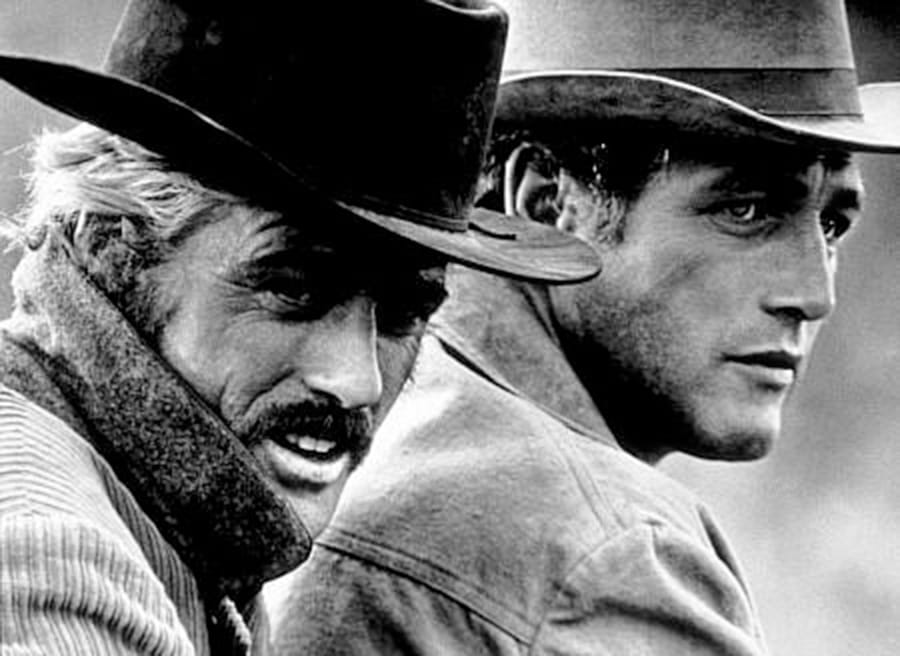A lot of huge movies never become cultural reference points the way “Butch Cassidy and the Sundance Kid” has, in the near-half-century since its fall 1969 premiere.
In the movie, Butch and Sundance spend half their own movie being pursued by a relentless posse. “Who are those guys?” The outlaws keep asking. The question I’m asking is a little different: Why are those lovable outlaws who photograph so very prettily, still the go-reference in what’s left of modern Hollywood for a certain brand of buddy movie?
Its reasons for popular success aren’t a secret. The movie turned into the biggest box office attraction that year, thanks to Paul Newman (already a big star) and Robert Redford (whose stardom was made by the movie). The sardonic mutterings of William Goldman’s Oscar-winning screenplay, which sold for a then-staggering $400,000, may not have been period-accurate, but the inauthenticity was part of the joke, and the charm. Who cared?
Like his brother, James Goldman, who wrote “The Lion in Winter,” William Goldman appreciated the casual, contemporary-sounding zinger. His was a wise-ass Western. It got by with older viewers who grew up with more sincere, earnest and solemn examples of the genre, as well as with young viewers who enjoyed the jokes and accepted the storyline’s shift from sunny good times to a bloody, if exceedingly romantic, endgame.
The 20th Century Fox theatrical re-release of director George Roy Hill’s picture touted the film as “probably the most entertaining Western ever made!” For some, it was. And for some key Hollywood power players today, the title remains short-hand for a male-dominated, star-propelled, commercial hooks aplenty.
Example A, unlikely as it sounds: Quentin Tarantino’s “Once Upon a Time … in Hollywood,” opening Friday. The writer-director’s ninth feature is set in 1969, the year of Butch and Sundance. It stars Leonardo DiCaprio as a fictional, fading movie star, and Brad Pitt as his longtime stunt double.
Earlier this year Sony Pictures head Tom Rothman compared its appeal, even though Tarantino’s narrative includes the Charles Manson murders, to “Butch Cassidy and the Sundance Kid.” “In the modern movie business you don’t get two-big-star pictures,” he told Deadline. This one, he implied, has some of that Butch and Sundance stardust.
Example B, odd as it sounds: “Green Book.” Last year director Peter Farrelly’s best picture Oscar winner was looking for a distributor. Farrelly arranged for Steven Spielberg to see it. He saw it. He loved it. He hooked up it with DreamWorks, and Universal. And, according to Farrelly, Spielberg told him “Green Book” was his favorite buddy comedy since “Butch Cassidy and the Sundance Kid.”
In any meeting, the mention of Butch and Sundance invokes bromance incarnate and a movie, fingers crossed, with massive appeal. Woody and Buzz in the “Toy Story” franchise may be true heroes and purer souls, but I’d be surprised if the screenwriters and directors of the “Toy Story” movies didn’t take a few cues from a certain wise-ass Western.
“Butch Cassidy” will always exemplify a moment in Hollywood when a movie could straddle the mainstream and the counterculture, for fun and profit.



